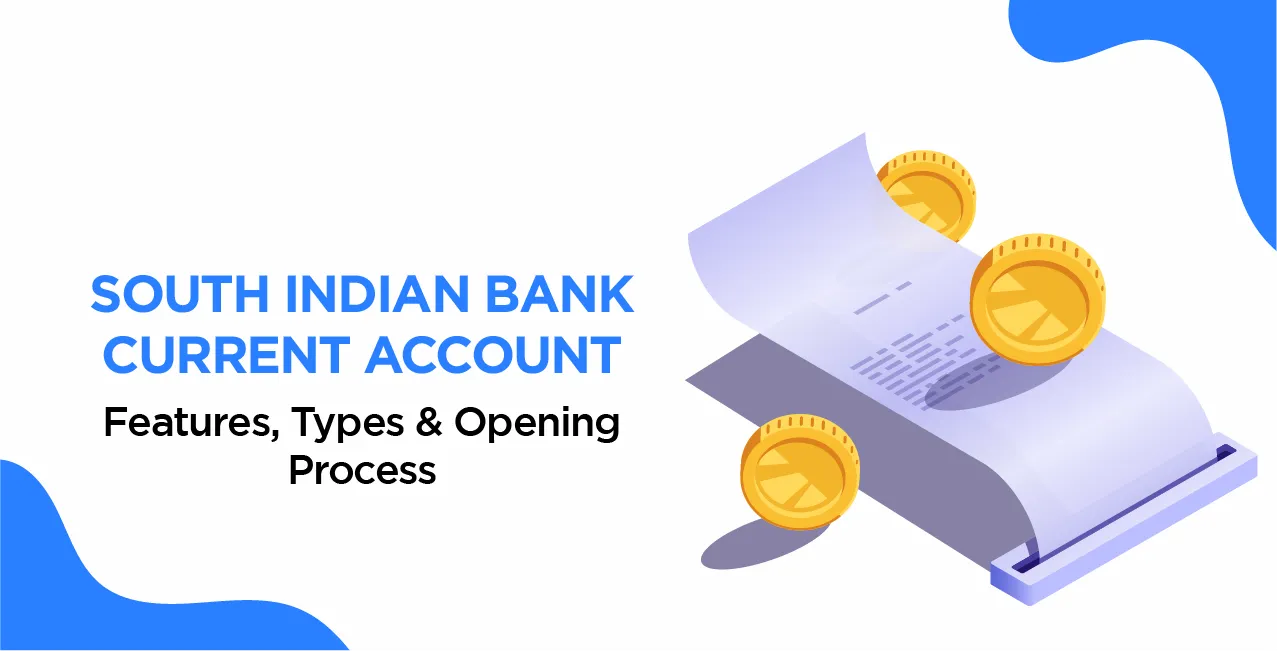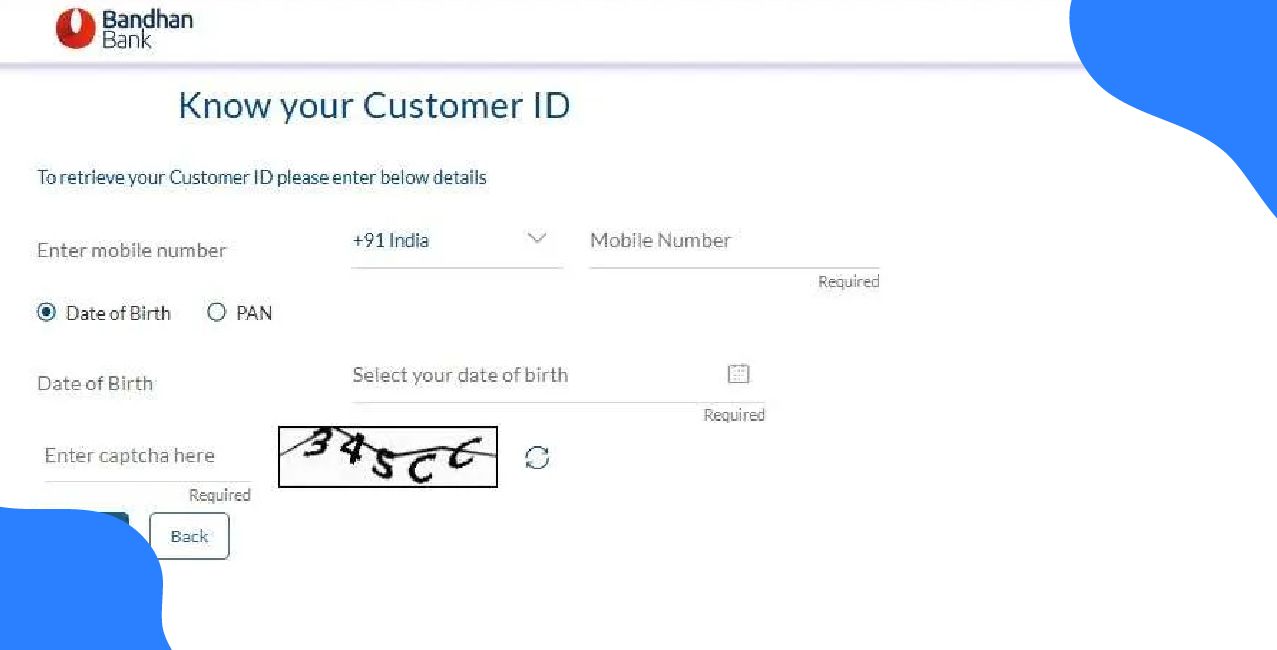
Author
LoansJagat Team
Read Time
20 Min
30 Apr 2025
South Indian Bank Current Account – Features, Types & Opening Process
"South Indian Bank ke current account ke saath business chale mast, na ho koi rukawat, na koi zabardast cost!"
South Indian Bank (SIB) is one of India’s leading private-sector banks, with a rich legacy dating back to 1929. Known for its customer-centric approach, the bank provides a diverse range of financial products and services tailored to businesses, professionals, and individuals.
Importance of Current Accounts for Businesses and Professionals
Let us understand the importance through the help of a small example:
Ravi, a sales executive at a mid-sized trading firm, receives his monthly salary directly into his South Indian Bank current account. Thanks to the account’s high transaction limit for example, for CD Premium Smart Account cash deposit is free up to ₹5,00,000 per month amongst many other benefits , Ravi can easily withdraw cash anytime he needs. Whether for personal expenses, travel allowances, or urgent purchases, without worrying about daily withdrawal limits, such accounts make his financial management smooth and stress-free.
Types of South Indian Bank Current Accounts
South Indian Bank offers various current accounts, each designed to meet the unique requirements of businesses and professionals. Below are the key current accounts available:
- Premium Business Accounts – Designed for established businesses requiring high transactional capabilities.
- Premium CD Smart Account – Ideal for businesses with high cash deposits and withdrawals.
- Trader Smart Current Account (TSCA) – Tailored for traders and small business owners with flexible transaction features.
Read More – South Indian Bank Net Banking - SIB EXIM Current Account – Best suited for export and import businesses, offering special features for international trade.
- FIZA Individual Current Account – Created for self-employed professionals and individual entrepreneurs.
Key Features of South Indian Bank Current Accounts
Each account type has distinct features catering to specific business needs. However, some standard features across all accounts include:
- Unlimited Transactions: No restriction on the number of transactions per month.
- High Cash Deposit Limits: Suitable for businesses with frequent cash handling requirements.
- Free Online Banking: Access to the internet and mobile banking for seamless financial management.
- Chequebook Facility: Free chequebooks to facilitate smooth business transactions.
- Multi-City Banking: Access funds from any branch across India.
- Customized Business Solutions: Account options are tailored to different business sizes and sectors.
Example Scenario: How South Indian Bank's Current Accounts Benefit Business Owners
Mr. Sharma, the owner of Sharma Textiles, operates a wholesale garment business that involves high-volume cash transactions, supplier payments, and cheque handling. He chose a South Indian Bank Current Account to manage his business finances efficiently.
1. Unlimited Transactions
Mr. Sharma frequently makes deposits, withdrawals, and payments to suppliers. On average, he conducts 500 transactions per month, including cash deposits, NEFT transfers, and cheque clearances.. For example, for CD Premium Smart Account Cash Deposit is free up to ₹5,00,000 per month; NEFT transfer is free up to 100 transactions per month and first 100 leaves of cheque book are free.
With South Indian Bank’s unlimited transaction feature, he does not have to pay extra fees or worry about exceeding any transaction limit, ensuring smooth business operations.
2. High Cash Deposit Limits
Since Sharma Textiles deals with many retailers, Mr. Sharma deposits large amounts of cash daily. In a typical month, his total cash deposits amount to ₹12,00,000.
With South Indian Bank’s high cash deposit limits, he can deposit large sums without incurring excessive fees. If his account allows free deposits up to ₹15,00,000, he stays within the limit, paying zero additional fees for cash deposits.
However, if his business experiences a surge in sales and he deposits ₹18,00,000 in a month, the extra ₹3,00,000 (beyond the ₹15,00,000 limit) is charged at ₹1 per ₹1,000.
To calculate the additional cost:
(₹3,00,000 ÷ 1,000) × ₹1 = ₹300
So, even in a high-sales month, his total cash deposit fee is just ₹300, making it a cost-effective banking option.
3. Free Online Banking
Mr. Sharma regularly pays suppliers via NEFT and RTGS transfers. Instead of visiting the bank, he manages all his vendor payments, salary disbursements, and tax filings online through free internet banking, saving both time and effort.
For example, he processes 100 online transactions per month at no extra cost, ensuring seamless financial management.
4. Chequebook Facility
Mr. Sharma often issues cheques to suppliers and landlords. His account provides a free chequebook with 200 leaves per month.
In a typical month, he issues 150 cheques, staying within the free limit and paying zero extra charges.
However, during the festive season, he issues 250 cheques. The extra 50 cheques beyond the free limit are charged ₹1.5 per cheque.
To calculate the extra cost:
50 × ₹1.5 = ₹75
So, for issuing 50 extra cheques, he pays only ₹75, making cheque payments highly economical.
5. Multi-City Banking
Sharma Textiles has branches in Mumbai, Delhi, and Bangalore. Mr. Sharma often travels between cities to oversee operations. With South Indian Bank’s multi-city banking feature, he can access funds from any branch across India without needing to carry large amounts of cash.
For example, while in Delhi, he needs to withdraw ₹5,00,000 to pay a supplier. He does this seamlessly from the nearest branch, avoiding withdrawal limits or additional fees.
6. Customized Business Solutions
Since his business deals with both wholesale and retail customers, Mr. Sharma’s account is tailored to his needs. His account manager helps him choose an account type with higher cash deposit limits, unlimited transactions, and lower overdraft interest rates, ensuring maximum savings and efficiency.
Benefits of South Indian Bank Current Accounts
Account Type | Key Benefits |
CD Premium Smart Account | High Cash Deposit Limit: This facilitates large business transactions.
|
CA Premium Current Accounts | Higher Transaction Limits: This accommodates businesses with high-volume transactions.
|
Trader Smart Current Account (TSCA) | Cost-Effective Transactions: Tailored for traders and small business owners.
|
SIB EXIM Current Account | Free Forex Transactions: Up to a specified limit, beneficial for exporters and importers.
|
Fiza - Individual Current Account | Free Online Banking Services: This facilitates hassle-free transactions.
|
Charges and Fees for South Indian Bank Current Accounts
Account Type | Minimum Balance Requirement | Transaction Fees | Additional Charges |
CD Premium Smart Account | ₹50,000 | Cash Deposit: Free up to ₹5,00,000 per month; beyond this, ₹2 per ₹1,000. - RTGS/NEFT: Free up to 100 transactions per month; thereafter, ₹5 per transaction. | - Cheque Book: First 100 leaves free per month; ₹2 per additional leaf. - Overdraft Interest: 10% per annum. |
Mr. Sharma, a small business owner, manages his company's finances through the CD Premium Smart Account. He appreciates the account’s features as they help him efficiently handle transactions while minimising costs.
For a 1-month overdraft, the interest calculation is (₹2,00,000 × 10%) ÷ 12 = ₹20,000 ÷ 12 = ₹1,667. Thus, he only pays ₹1,667 as interest for using an overdraft facility, which helps him manage cash flow without taking a high-cost loan.
| |||
CA Premium Current Accounts | ₹5,000 for CA Premium General (E), CA Premium Standard (D), CA Premium Gold (B) and CA Premium Platinum (A), the requirement is ₹10,000, ₹1,00,000, ₹.5,00,000, respectively. | - Cash Deposit: Free up to ₹10 lakhs per month; beyond this, ₹1.5 per ₹1,000. - RTGS/NEFT: Free up to 200 transactions per month; thereafter, ₹4 per transaction. | - Cheque Book: First 200 leaves free per month; ₹1.5 per additional leaf. - Overdraft Interest: 9.5% per annum. |
| |||
Trader Smart Current Account (TSCA) | ₹10,000 | - Cash Deposit: Free up to ₹2,00,000 per month; beyond this, ₹2.5 per ₹1,000. - RTGS/NEFT: Free up to 50 transactions per month; thereafter, ₹6 per transaction. | - Cheque Book: First 50 leaves free per month; ₹2.5 per additional leaf. - Overdraft Interest: 11% per annum. |
| |||
SIB EXIM Current Account | ₹2,00,000 | - Cash Deposit: Free up to ₹15,00,000 per month; beyond this, ₹1 per ₹1,000. - RTGS/NEFT: Free up to 300 transactions per month; thereafter, ₹3 per transaction. | - Cheque Book: First 300 leaves free per month; ₹1 per additional leaf. - Overdraft Interest: 9% per annum. |
| |||
Fiza - Individual Current Account | ₹25,000 | - Cash Deposit: Free up to ₹1,00,000 per month; beyond this, ₹3 per ₹1,000. - RTGS/NEFT: Free up to 30 transactions per month; thereafter, ₹7 per transaction. | - Cheque Book: First 25 leaves free per month; ₹3 per additional leaf. - Overdraft Interest: 12% per annum. |
| |||
Note: The above charges are indicative and subject to change. For the most accurate and up-to-date information, please refer to the official South Indian Bank service charges page or contact the bank directly.
By choosing the appropriate current account type, businesses and professionals can effectively manage their banking needs while optimizing costs.
South Indian Bank Current Account Eligibility & Required Documents
Eligibility Criteria
To open a South Indian Bank current account, individuals and businesses must meet the following eligibility requirements:
- Businesses: Sole proprietorships, partnerships, private limited companies, and public limited companies.
- Professionals: Self-employed individuals, consultants, and freelancers.
- Organizations: Trusts, NGOs, and associations.
Required Documents
The documents required to open a current account include:
- For Individuals & Proprietors: PAN card, Aadhaar card, and business registration proof.
- For Partnerships & Companies: PAN card, incorporation certificate, partnership deed, or memorandum & articles of association.
- For Trusts & NGOs: Registration certificate, trust deed, and KYC documents of trustees.
How to Open a South Indian Bank Current Account?
Opening a South Indian Bank Current Account is a straightforward process:
- Visit the Nearest Branch or Apply Online
- Customers can use the branch locator to find the nearest SIB branch or apply online through the bank’s official website.
- Customers can use the branch locator to find the nearest SIB branch or apply online through the bank’s official website.
- Go to the “online account opening section” if you are applying through an online medium, and if going to the branch, you can ask the representative for types of accounts available.
- You can choose the “resident customer” option which will direct you to the different types of current accounts available. Or you can directly click on this link “SIB current accounts” to access the accounts.
- You can choose the “resident customer” option which will direct you to the different types of current accounts available. Or you can directly click on this link “SIB current accounts” to access the accounts.
- Choose the Right Current Account Type
- Select the most suitable current account based on business requirements.
- Select the most suitable current account based on business requirements.
- Submit the Required Documents
- Provide the necessary KYC documents along with the filled account opening form.
- Provide the necessary KYC documents along with the filled account opening form.
- Verification and Initial Deposit
- The bank verifies the documents, and customers need to deposit the required minimum balance.
- The bank verifies the documents, and customers need to deposit the required minimum balance.
- Account Activation
- Once the verification is complete, the account is activated, and customers can start using banking services.
- Once the verification is complete, the account is activated, and customers can start using banking services.
South Indian Bank Current Account vs Competitor Banks
Features | South Indian Bank | HDFC Bank | ICICI Bank |
Minimum Balance | Varies by account type but starts from as low as ₹5,000. | ₹10,000 – ₹50,000 | ₹10,000 – ₹50,000 |
Transaction Limits | Unlimited | Limited based on balance | Limited based on balance |
Cash Deposit Limit | High free limit | Limited | Limited |
Digital Banking | Yes | Yes | Yes |
Overdraft Facility | Available | Available | Available |
Foreign Exchange | Yes | Yes | Yes |
Best For | Businesses of all sizes | Large enterprises | SMEs & startups |
Takeaway: South Indian Bank’s current accounts stand out by offering lower minimum balance requirements, unlimited transactions, and higher free cash deposit limits. Unlike competitors that impose restrictions based on balance, SIB provides greater flexibility and ease of banking for businesses of all sizes. Whether you're a startup, SME, or large enterprise, SIB ensures seamless banking, making it a smart choice for businesses looking for convenience and efficiency.
Conclusion
South Indian Bank’s current accounts provide a well-rounded banking solution for businesses, traders, and professionals by offering high transaction limits, free online banking, and tailored financial services. Whether you run a high-volume wholesale business like Mr. Sharma or manage international trade like Mr. Mehta, SIB’s current accounts help streamline operations, reduce banking costs, and enhance financial efficiency.
Also Read - South Indian Bank Credit Card
With benefits such as unlimited transactions, high cash deposit limits, multi-city banking, and competitive overdraft facilities, SIB ensures that businesses of all sizes can focus on growth rather than banking hassles. Choose the right SIB current account today and take your business to the next level.
South Indian Bank Current Accounts (FAQs)
1. What is the minimum balance required for a South Indian Bank Current Account?
The minimum balance requirement varies based on the type of current account chosen.
2. Can I open a South Indian Bank Current Account online?
Yes, customers can initiate the account opening process online, but they may need to visit a branch for document verification.
3. Does South Indian Bank provide an overdraft facility?
Yes, most current accounts come with an overdraft facility, subject to eligibility and bank approval.
4. Are there any transaction limits on South Indian Bank Current Accounts?
No, most current accounts offer unlimited transactions.
5. How can I close my South Indian Bank Current Account?
To close an account, customers must visit the branch, submit a closure request, and clear any outstanding dues.
Other Current Account Pages | |||
About the Author

LoansJagat Team
‘Simplify Finance for Everyone.’ This is the common goal of our team, as we try to explain any topic with relatable examples. From personal to business finance, managing EMIs to becoming debt-free, we do extensive research on each and every parameter, so you don’t have to. Scroll up and have a look at what 15+ years of experience in the BFSI sector looks like.

Quick Apply Loan
Subscribe Now


